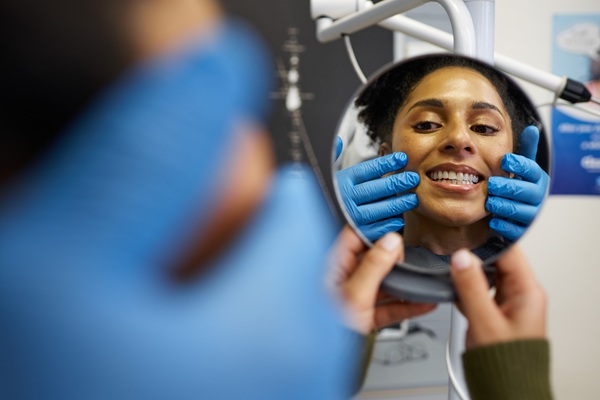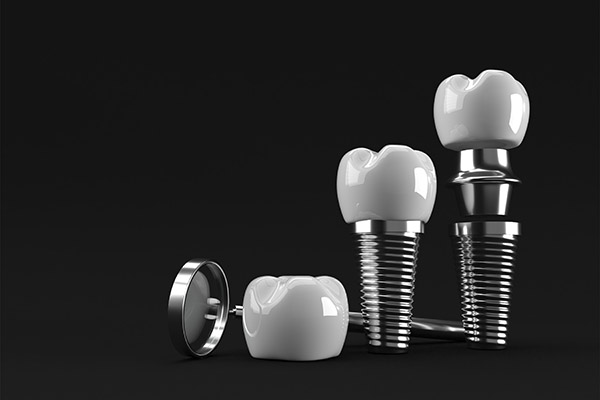A Step by Step Guide to Understanding Gum Disease

Finding out you have gum disease may prove worrisome. Correcting the issue may seem daunting, especially since you do not understand how it developed in the first place. The good news is, in many cases, with the right mindset and a few adjustments to personal hygiene routines, the issue can be controlled. Find out some of the causes of the disease and ways the dentist may recommend treating it.
How gum disease begins
Periodontal or gum disease is an infection of the gums. It starts when particles enter the mouth, usually through food and liquids. These particles contain bacteria that stick to the teeth. If proper brushing and flossing do not occur regularly, the bacteria eventually forms a hard shell over the surface of the teeth called plaque. When plaque is not removed swiftly, it evolves into tartar, something only a professional cleaning can remove. Smoking and diabetes may put a person at higher risk for periodontal disease.
The progression of gum disease
Tartar enables bacteria to infest a tooth and any tissue surrounding it. The process happens over time, but if it is not stopped early enough, it may cause permanent damage to the mouth.
First signs of a problem
Gum disease is not something that is easily recognized in the early stages. It usually begins quite painlessly. By the time the first symptoms appear, the bacteria could already have made their way far under the gumline. Signs to look out for include:
- Red, swollen gums around teeth
- Bleeding either after brushing or spontaneously
- Wiggly teeth
- Foul mouth odor
- Pain when eating
Pockets form around teeth
When visiting the dentist, part of the standard routine is to check for pockets of space between the gums and teeth. Gaps tell the dentist that periodontal disease is present. As the disease progresses, it causes pockets between the gums and teeth that allow bacteria and particles to get under the gumline. This may lead to a severe infection under the gums, even as the body's white blood cells rush to keep the bacteria from intruding further into the body. Plaque may continue to grow at an alarming rate, spreading under the gum tissue.
Bone and tissue degrade
As plaque continues to overtake the teeth under the gums, the chemicals within it start to break down the bones in the mouth. The root system of teeth is attacked, compromising the gum's ability to keep teeth tightly in place. As the disease progresses, the gums recede, allowing the pockets to expand. This leads to the destruction of more tissue and bone. Teeth may start to loosen and fall out due to a compromised bone and tissue network.
Conclusion
The dentist will have a course of treatment for tackling gum disease. Depending on the severity of the condition, it may range from enhancing cleaning measures at home, or a patient may have to undergo a series of thorough cleanings at the office. Taking care of teeth through consistent brushing and flossing may help rid the mouth of plaque that causes so many issues.
Request an appointment here: https://www.carmelsmilesdentist.com or call Smiles in the Village Dentistry at (317) 218-7985 for an appointment in our Carmel office.
Check out what others are saying about our services on Yelp: Read our Yelp reviews.
Related Posts
Professional dental cleaning are integral for keeping your mouth healthy. They remove plaque and tartar (hardened plaque) that regular brushing and flossing cannot, leaving your teeth and gums refreshed. Maintaining healthy habits that keep your smile bright and strong is essential to make the most of a dental cleaning. Caring for your teeth properly after…
If you are considering implant dentistry or are about to go through the process and want to learn more about it, it is helpful to first understand the basics. Here, we will discuss the various parts that make up an implant dentistry restoration and highlight how they all work together to complete the restoration.An implant…
If you have opted for implant dentistry to replace your missing teeth, you will need to decide on fixed or removable restorations. Read on to learn about implant dentistry and your options. Removable implant-supported restorations can be snapped on and off the abutments anytime there is a need to take off. In contrast, fixed restorations…
Dentures have long provided an effective solution for patients with missing teeth, offering improved oral function and facial appearance. Today, advances in digital dentistry are transforming the way dentures are designed, fabricated, and fitted—offering greater precision, comfort, and natural aesthetics. This innovative approach represents a new era in restorative care, helping patients enjoy a confident…


